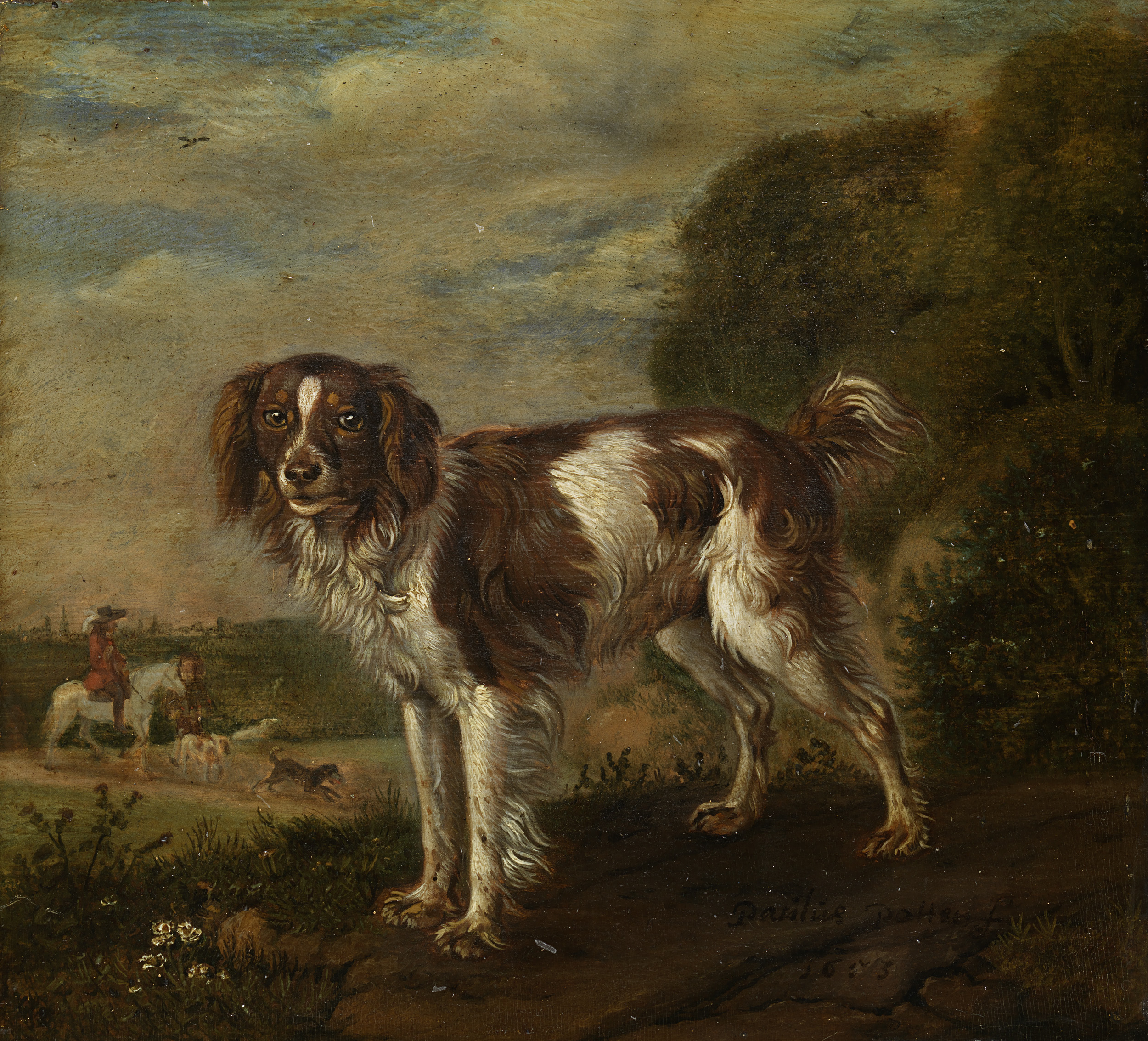its head slightly turned, attuned to the world around it. Paulus Potter, hailed as the preeminent Dutch animal artist of his era, meticulously captured every physical nuance of the horse: the lustrous gleam of its coat and mane, the aqueous sheen in its eye, and the gracefully contoured curves of its form. Simultaneously, he breathed an individualized essence into the horse, merging wilderness with acute sensitivity. In fact, the creature appears to react to the distant echoes of a hunt transpiring in the middle distance.
The painting's significance holds a dual nature. It likely serves as a portrait of the horse, possibly commissioned by the proprietor of the country estate on the right. The painstaking portrayal of this domesticated animal hints at the pride a prosperous Dutch landowner might take in possessing such prized livestock. Yet, the horse stands untethered, suggesting a sense of unbridled freedom. Despite this, its immaculate grooming and placement amid cultivated fields convey the notion that Dutch prosperity stemmed from humanity's mastery over the untamed forces of nature.
If you love horses in art, and animals in general, don't miss our Animals in Art - 50 Postcards Sets, which you can find in our DailyArt Shop. : )
P.S. One of the most famous horse painters was the rebellious Rosa Bonheur; you can learn more about her famous animal paintings!


 Paulus Potter
Paulus Potter